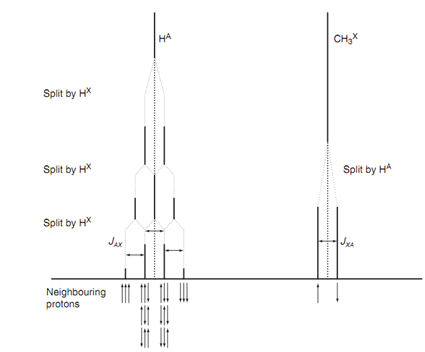Splitting pattern:
It is probable to rationalize the coupling patterns and peak intensities for other coupling systems in an identical manner, but a quicker method is to make use of a system known as Pascall's triangle. To make use of the triangle, you ?rst identify the number of protons which are neighboring the group of interest. This describes which row of the triangle is relevant. The row points out the number of peaks one would suppose in the signal and their relative intensity. Consider for instance 1, 1- dichloroethane. The methine group has a neighboring methyl group and thus there are three neighboring protons.

Figure: Splitting pattern for CH-CH3.
The relevant row in Pascall's triangle comprises four entries and thus the signal for the methine proton is a quartet with a ratio of 1:3:3: 1. While we consider the methyl group, it has one neighboring proton and thus Pascall's triangle predicts a doublet of ratio 1: 1.
Note: the number of peaks in a signal is all time one more than the number of neighboring protons.